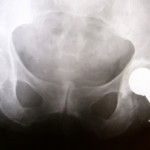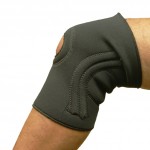Supermarket EHRs to help with obesity education
Childhood obesity is at an all-time high in the U.S. According to the Centers for Disease Control and Prevention, not only has childhood obesity doubled in the past 30 years, but adolescent obesity has quadrupled. Obese children account for a huge cross section of the population. In 2012, 18 percent of children and 21 percent of adolescents were considered obese. Despite efforts on the part of people like first lady Michelle Obama and celebrity chef Jamie Oliver, the rate of obesity among children continues to rise. Recently, Iowa-based supermarket chain Hy-Vee announced a plan to assist with this epidemic. By using a combination of electronic health records and on-site, registered dietitians, Hy-Vee hopes to assist its customers in eating more healthily and improving their diets.
Childhood obesity at an all-time high
Although some children are overweight as the result of genetics, hormone imbalances, glandular deficiency or other factors outside of the control of their parents, such incidents account for a very small percentage of childhood obesity cases. Instead, according to the CDC, most childhood obesity is the result of caloric imbalance. Put simply, this means that children are taking in more calories than they are burning through physical activity. Therefore, childhood obesity is the result of a combination of two factors: bad diet and lack of exercise. Any plan that seeks to put an end to America's high childhood obesity rate must be two pronged: one to address diet and the other to address exercise.
Efforts to educate and reform
The first lady's Let's Move Program is an excellent example of such an effort. Her initiative is designed to hit all of the hot topics of childhood obesity by encouraging kids to exercise more and eat better. It has also taken efforts to better educate parents and family members about the risks of being overweight, which is emerging as one of the most important hurdles to overcome in taking steps toward increasing the overall health of America's youth.
Over the past decade, many initiatives and legislative efforts have been made to make school lunches healthier. Today, most schools no longer serve anything with processed sugar or high-fructose corn syrup. Soda machines now vend sparkling water, and pizza is now made with whole-grain crust. Physical education classes now include writing and research projects to teach students about the negative effects of being overweight. Still, obesity rates have continued to rise, which has caused researchers to take a harder look at home life as a source of caloric imbalances. One study from the American Health Association reported that one of the biggest challenges facing parents with overweight children is in determining their child's calorie intake and energy expenditure. This is complicated by natural increases in children's appetites as they grow.
On-site EHRs and dietitians may help
Hy-Vee hopes to assist parents with exactly this problem. The supermarket plans to provide access to EHRs for both parents and children. Therefore, when a family member goes shopping, he or she can work with the dietician to access his or her EHRs and work out a meal plan for the week that is suitable for the people who will be eating it. The program will also involve one-on-one nutrition counseling sessions with dieticians, group classes and biometric screenings. Hy-Vee also plans on maintaining electronic communications with other community partners to provide additional support for their customers across a bigger crosssection of their lives. The hope is for people to develop healthy eating habits for both themselves and their family members, and to give people access to better on-site resources for assisting with the management of chronic health conditions like diabetes, heart disease and obesity.



